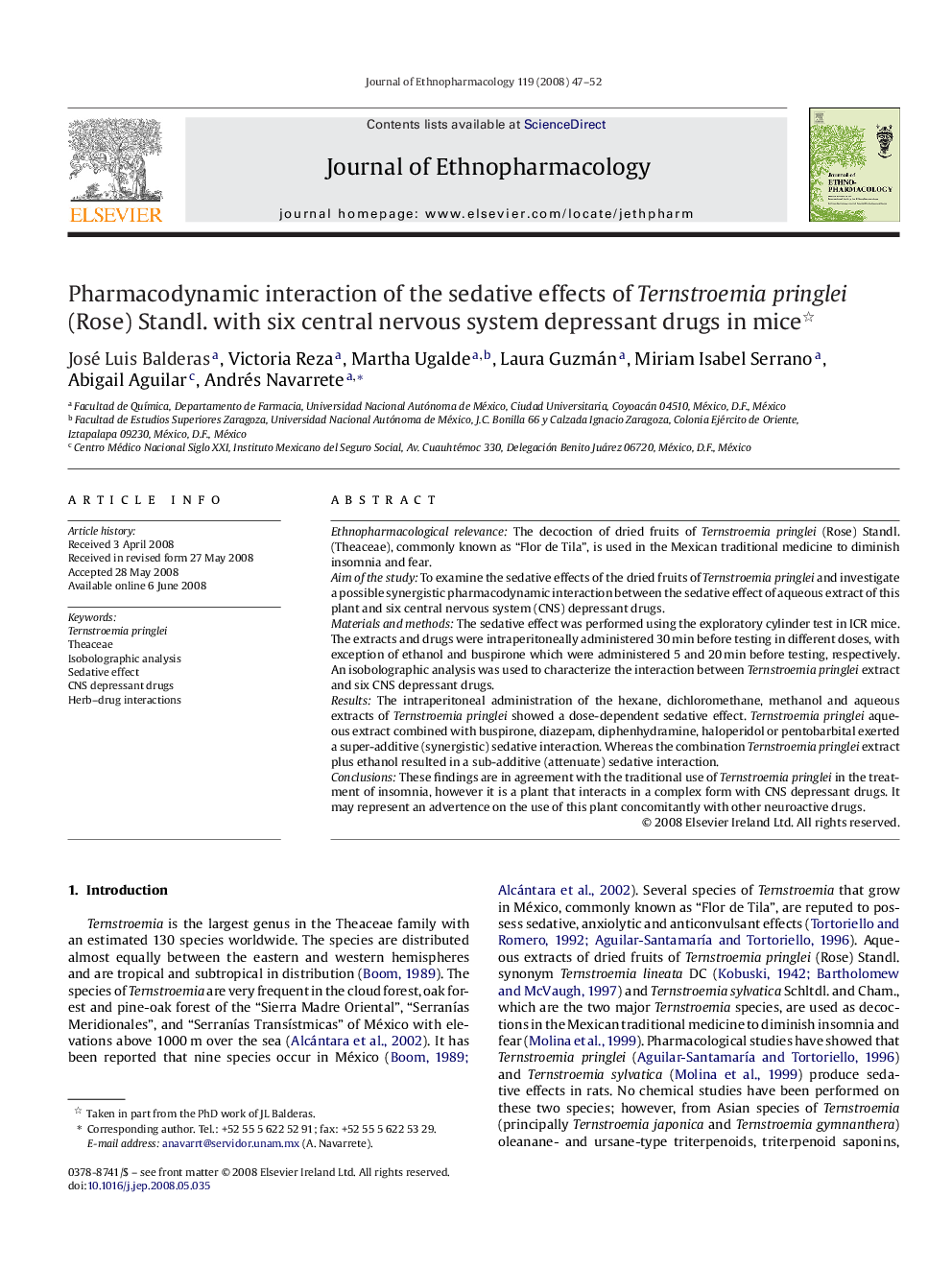| Article ID | Journal | Published Year | Pages | File Type |
|---|---|---|---|---|
| 2546597 | Journal of Ethnopharmacology | 2008 | 6 Pages |
Ethnopharmacological relevanceThe decoction of dried fruits of Ternstroemia pringlei (Rose) Standl. (Theaceae), commonly known as “Flor de Tila”, is used in the Mexican traditional medicine to diminish insomnia and fear.Aim of the studyTo examine the sedative effects of the dried fruits of Ternstroemia pringlei and investigate a possible synergistic pharmacodynamic interaction between the sedative effect of aqueous extract of this plant and six central nervous system (CNS) depressant drugs.Materials and methodsThe sedative effect was performed using the exploratory cylinder test in ICR mice. The extracts and drugs were intraperitoneally administered 30 min before testing in different doses, with exception of ethanol and buspirone which were administered 5 and 20 min before testing, respectively. An isobolographic analysis was used to characterize the interaction between Ternstroemia pringlei extract and six CNS depressant drugs.ResultsThe intraperitoneal administration of the hexane, dichloromethane, methanol and aqueous extracts of Ternstroemia pringlei showed a dose-dependent sedative effect. Ternstroemia pringlei aqueous extract combined with buspirone, diazepam, diphenhydramine, haloperidol or pentobarbital exerted a super-additive (synergistic) sedative interaction. Whereas the combination Ternstroemia pringlei extract plus ethanol resulted in a sub-additive (attenuate) sedative interaction.ConclusionsThese findings are in agreement with the traditional use of Ternstroemia pringlei in the treatment of insomnia, however it is a plant that interacts in a complex form with CNS depressant drugs. It may represent an advertence on the use of this plant concomitantly with other neuroactive drugs.
